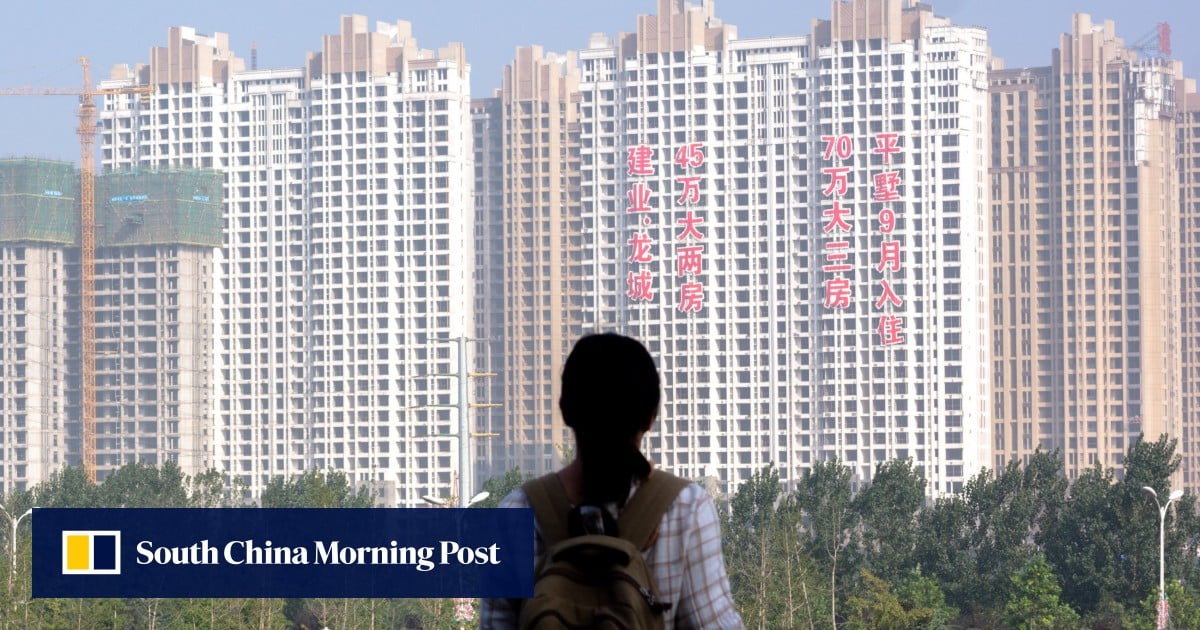
“While the cuts won’t make much difference on their own, they are set to be followed by wider policy easing,” economists at Capital Economics said on Tuesday.
The LPR has been considered China’s de facto benchmark funding cost since 2019. The rate is decided by a group of 18 banks and is reported in the form of a spread over the interest rate of the central bank’s medium-term lending facility.
On Friday, China’s State Council announced plans for “more powerful” economic packages to expand effective demand, strengthen the real economy and defuse risks in key areas.
And many policy advisers and analysts have suggested more support for the property sector, which is seen as a major growth engine for the Chinese economy, is required to help accomplish the full-year growth target of around 5 per cent.
“Stabilising expectations and confidence is vital for the stabilisation of the property market,” said a research report by Tsinghua University at the weekend.
Property is the largest source of both assets and liabilities for Chinese families, and has plagued financial regulators, developers, commercial banks and households over the last three years.
It will help increase Chinese homebuyers’ disposable income and improve their expectations for consumer spending
The national average mortgage rate – considering the preferential rate for first homebuyers and the rate for buyers of more than one property – was 4.14 per cent in the first quarter, representing a fall of 1.35 percentage points from a year earlier, according to central bank data.
The latest LPR cuts, if it is fully implemented by commercial banks, would lower the household burden by dozens of billions yuan a year based on the existing mortgage loan size of 38.9 trillion yuan (US$5.4 trillion), and also boost corporate investment.
“Given they will have to pay less in interest payments, it will help increase Chinese homebuyers’ disposable income and improve their expectations for consumer spending,” said Wen Bin, chief economist at China Minsheng Bank.
“It will also bring a series of positive feedback for [Beijing’s] consumption boost and economic revival plans.”
Property investment in the first five months of the year fell by 7.2 per cent from a year earlier, an acceleration from the fall of 6.2 per cent in the first four months.
Floor space sales also fell by 0.9 per cent, year on year, in the first five months of the year compared to a decrease of 0.4 per cent in the first four months.
The Tsinghua University team, led by former central bank adviser Li Daokui, suggested Beijing should make it clear to public that in the short term it will not levy a property tax – that could help alleviate local-level government debt pressure and narrow the wealth gap – and instead implement city-specific policies to boost demand.
Chinese leaders have been discussing a first-of-its-kind tax on property since 2003 and a new pilot programme was mentioned in 2021. A national registration system is also in place after a decade-long effort to record all of the information on urban flats, villas, offices and rural houses, but Chinese households have expressed concerns that a US-like property tax would increase their costs.
Local authorities have imposed a variety of restrictions – including on purchases, mortgages and financing for developers – given Beijing’s overriding principle that houses are for living in and not for speculation.
Some cities have partially lifted purchase restrictions and increased quotas for mortgage loans.

